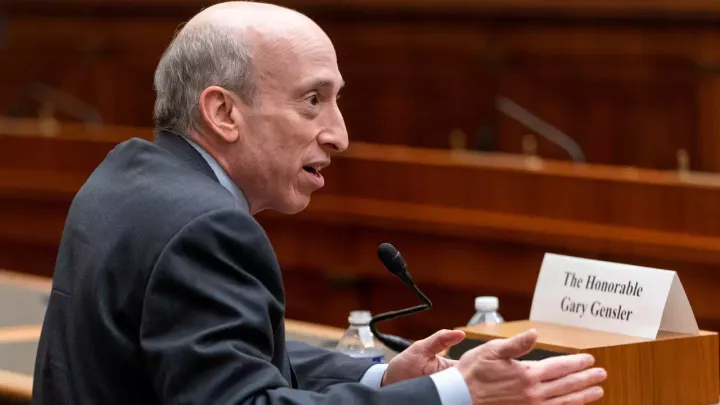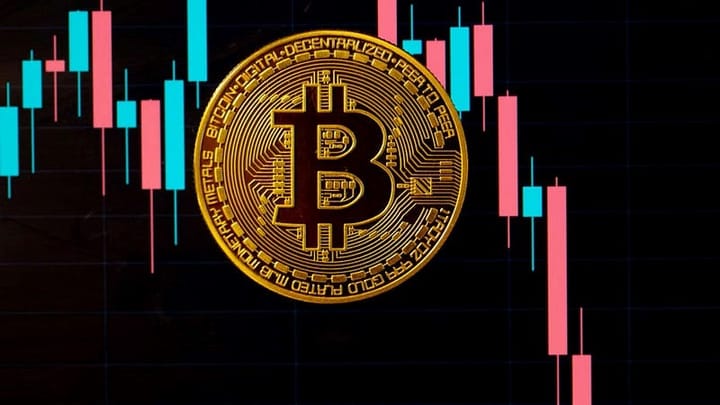Bitcoin to Surge Toward $200,000 by 2025? Factors Driving the Crypto Boom and ETF Growth
Bitcoin is on a record-breaking rally, soaring past $98,000. With Trump’s crypto-friendly stance, booming ETFs like iShares Bitcoin Trust (IBIT), and growing market optimism, analysts predict Bitcoin could hit $200,000 by 2025. Find out why investors are bullish on Bitcoin’s future.

Bitcoin’s Path to $200,000 in 2025: What’s Fueling the Surge?
Bitcoin has been on an extraordinary upward trajectory, reaching a significant milestone of over $98,000 this week, marking a 9.3% gain in just five days. With 2024 delivering an astonishing 122% rise in Bitcoin's value, there’s increasing speculation that the cryptocurrency could continue its climb, potentially hitting $200,000 by 2025. As of November 21, 2024, Bitcoin has surged by nearly 45% in just one month, fueled by a combination of regulatory shifts, financial innovations, and global economic trends.
The Trump Effect: A Boost for Bitcoin
One of the key drivers behind Bitcoin’s recent surge is the "Trump trade." Since Donald Trump’s November 5 election win, markets have responded positively to the idea of a more crypto-friendly regulatory environment. Trump has consistently promised to make the U.S. the world’s "crypto capital" and take a less restrictive approach toward digital assets. His stance, emphasizing deregulation and potentially favorable fiscal policies, has invigorated the cryptocurrency market. Many experts believe that Bitcoin could continue its bullish run under Trump’s second presidency.
Since Trump’s election, Bitcoin has gained approximately 45%, and cryptocurrency investors are increasingly optimistic about what a "Trump presidency" means for the sector. Analysts are already predicting that Bitcoin could be one of the main beneficiaries of such policies, with speculation around the implementation of a national Bitcoin reserve, looser regulations for crypto companies, and larger fiscal deficits that could further drive Bitcoin’s appeal as a hedge against inflation.
Bitcoin ETFs: A Growing Phenomenon
Bitcoin exchange-traded funds (ETFs) have become a focal point in the crypto market, with the launch of funds like BlackRock’s iShares Bitcoin Trust ETF (IBIT) and its rapid growth. In just 11 months since its launch, the IBIT ETF has amassed over $41 billion in assets under management (AUM), making it the fastest-growing ETF in history. On November 19, 2024, BlackRock’s IBIT saw a 38% increase in its AUM over just a seven-day period, further solidifying its status as a key player in the growing intersection of traditional finance and cryptocurrencies.
The popularity of Bitcoin ETFs has been spurred by the ability of traditional investors to gain exposure to Bitcoin without directly purchasing the cryptocurrency. iShares Bitcoin Trust ETF (IBIT), which tracks the price of Bitcoin, has been one of the most successful, and it now ranks among the top 1% of ETFs, attracting significant attention from both institutional and retail investors.
Options trading on IBIT began on Nasdaq in mid-November, with more than 73,000 options contracts traded in the first hour of trading, pushing IBIT into the top 20 most active non-index options. For investors seeking to profit from Bitcoin's volatility, options trading provides a way to benefit from both rising and falling prices, further boosting interest in Bitcoin ETFs.
Bitcoin and Inflation: A Hedge Against Economic Uncertainty
One of the reasons why Bitcoin has been gaining favor among investors is its reputation as a hedge against inflation. Unlike traditional fiat currencies, which can be printed in unlimited quantities by central banks, Bitcoin has a fixed supply capped at 21 million coins. This limited supply gives Bitcoin a unique characteristic: it can maintain or increase its value in times of inflation or economic uncertainty, as it is not subject to the same devaluation risks as traditional currencies.
With inflationary pressures mounting globally and fiscal policies that might increase government deficits, Bitcoin has become increasingly attractive as an asset that can preserve wealth. President Trump's stance on high import tariffs is expected to drive inflation, creating a favorable environment for Bitcoin to act as a store of value. In addition to this, Bitcoin’s scarcity combined with rising demand makes it a potentially lucrative asset as we approach 2025.
The Impact of Gary Gensler’s Departure
In another twist, the cryptocurrency community is celebrating the announcement of SEC Chair Gary Gensler’s resignation, effective January 2025. Gensler’s tenure was marked by numerous clashes with the crypto industry, as he led the SEC in cracking down on cryptocurrency issuers and attempting to classify many tokens, including Bitcoin and its peers, as securities.
Gensler’s resignation could signal a shift in regulatory policy, with many hoping for a more crypto-friendly environment under Trump’s leadership. Crypto companies that were once under the threat of lawsuits from the SEC, such as Coinbase, may see their legal battles ease, which would provide more certainty for investors.
The Growing Role of Institutional Investors in Bitcoin
The renewed interest in Bitcoin is not limited to retail investors. A number of institutional players, including Wall Street giants like Goldman Sachs, have recently re-entered the Bitcoin market. Goldman Sachs, for example, has disclosed holding $710 million in Bitcoin across various ETFs, signaling its confidence in the long-term potential of digital assets.
This growing institutional adoption is helping to legitimize Bitcoin as an asset class and broaden its appeal to a wider range of investors. As more institutional investors pour capital into Bitcoin, its price is expected to climb even higher, especially if regulatory clarity improves.
What’s Next for Bitcoin: Can $200,000 Be Reached?
Looking ahead, Bitcoin's future appears bright, with analysts predicting that it could hit $100,000 by the end of 2024. With a continuation of the trends we’ve seen—crypto-friendly policies from Trump, institutional interest, and a favorable economic environment—Bitcoin could very well double its current value, potentially reaching $200,000 by the end of 2025.
However, the cryptocurrency market remains volatile, and investors should be aware of the risks. Questions remain about the specifics of Trump’s crypto policies and the broader regulatory environment. As the market responds to these uncertainties, Bitcoin’s price could see fluctuations in the short term, although the long-term outlook remains highly optimistic.
Bitcoin ETFs to Watch: Grayscale, BlackRock, Fidelity, and More
As Bitcoin’s price surges, several Bitcoin ETFs have also emerged as key investment vehicles for those looking to gain exposure to the cryptocurrency market. Some of the most prominent Bitcoin ETFs include:
- Grayscale Bitcoin Trust (GBTC): A leading Bitcoin investment trust that charges 150 basis points (bps) in fees.
- iShares Bitcoin Trust (IBIT): BlackRock's Bitcoin ETF, which charges 25 bps in fees and has rapidly gained popularity.
- Fidelity Wise Origin Bitcoin Fund (FBTC): Another player in the Bitcoin ETF space, charging 25 bps.
- ARK 21Shares Bitcoin ETF (ARKB): An ETF that charges 21 bps in fees, part of Cathie Wood’s ARK Investment Management’s efforts to gain exposure to Bitcoin.
- Bitwise Bitcoin ETF (BITB): With a fee structure of just 20 bps, Bitwise’s Bitcoin ETF is one of the lowest-cost options available.
For investors looking to capitalize on Bitcoin’s rise, these ETFs provide an efficient way to gain exposure to Bitcoin without the need to purchase the cryptocurrency directly.
Final Thoughts: Bitcoin’s Bright Future
Bitcoin’s meteoric rise, fueled by political developments, regulatory changes, and growing institutional interest, has made it one of the most exciting assets in the financial world. As we approach 2025, Bitcoin has the potential to continue its ascent, driven by the bullish factors of increased demand, inflationary concerns, and a more favorable regulatory environment.
Whether Bitcoin reaches $200,000 or surpasses that mark remains to be seen, but the combination of a crypto-friendly U.S. administration under Trump, Bitcoin ETFs, and the global shift toward digital assets points toward an exciting future for the cryptocurrency market.



